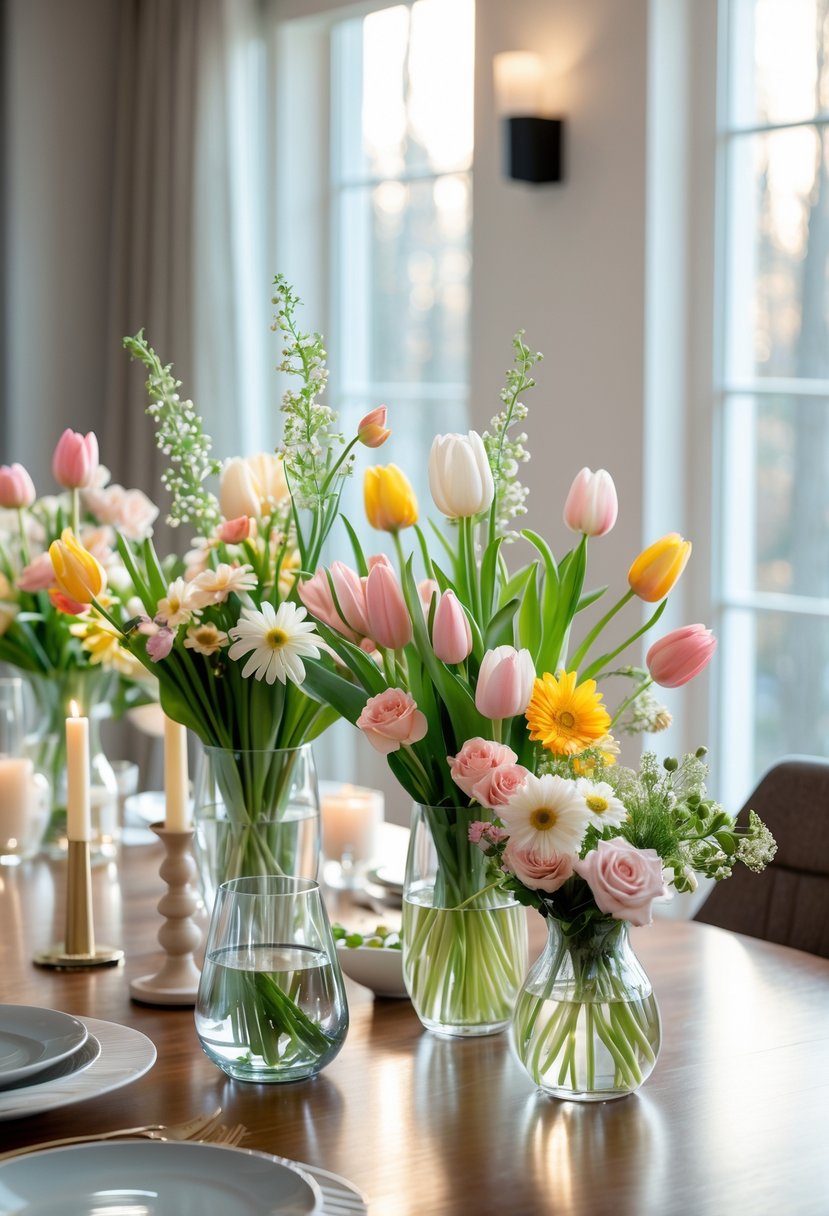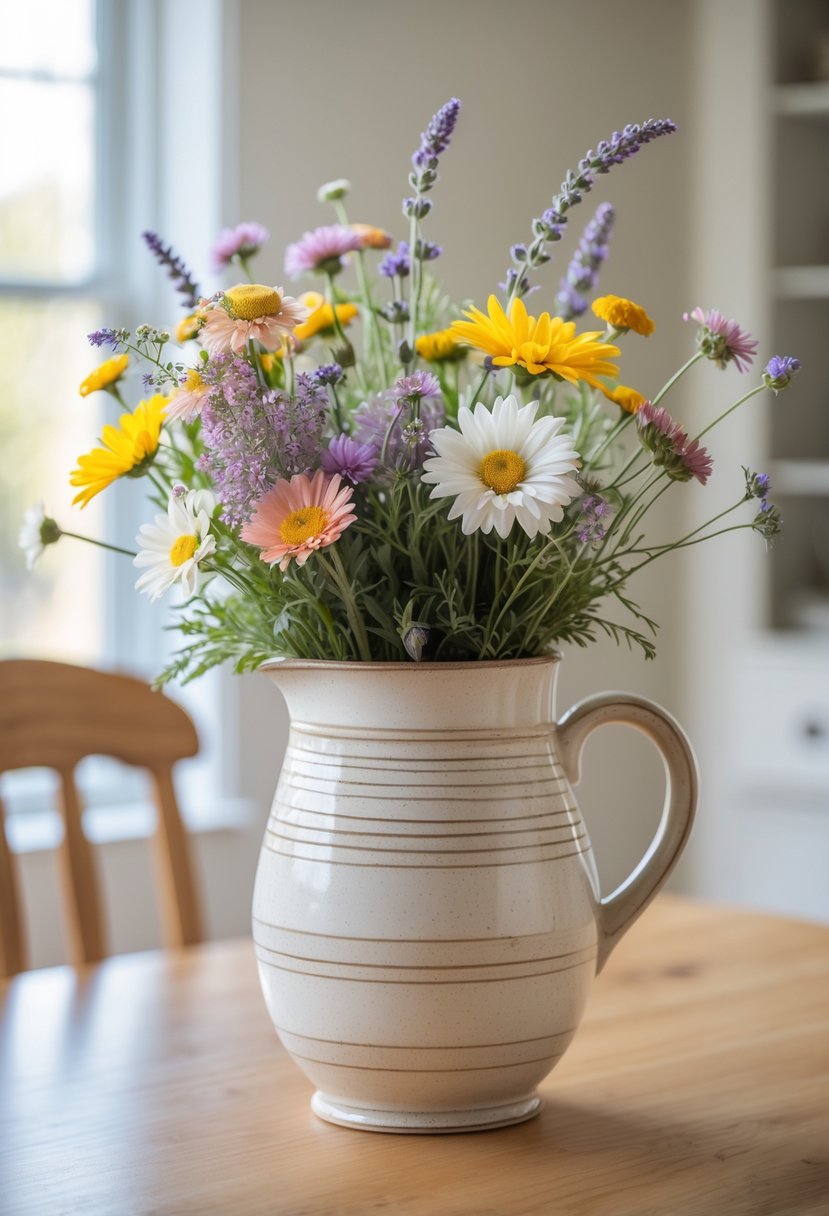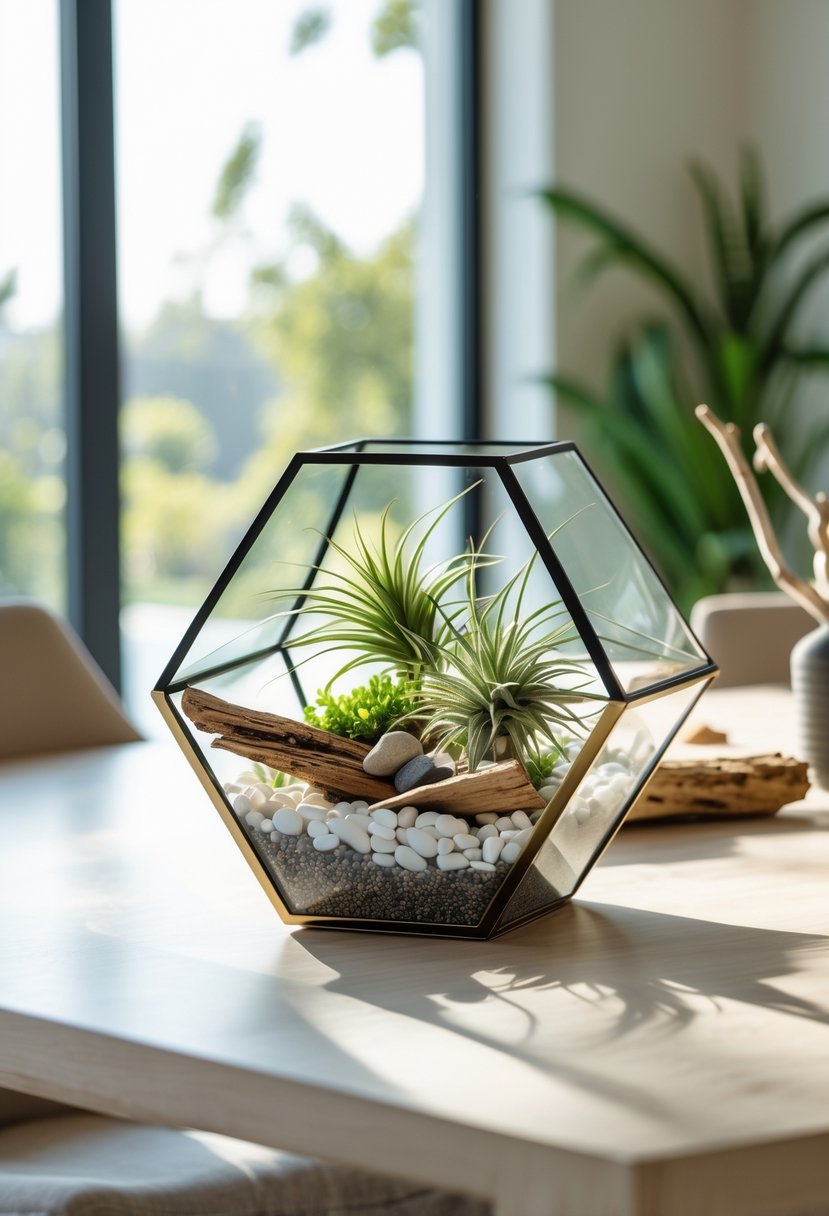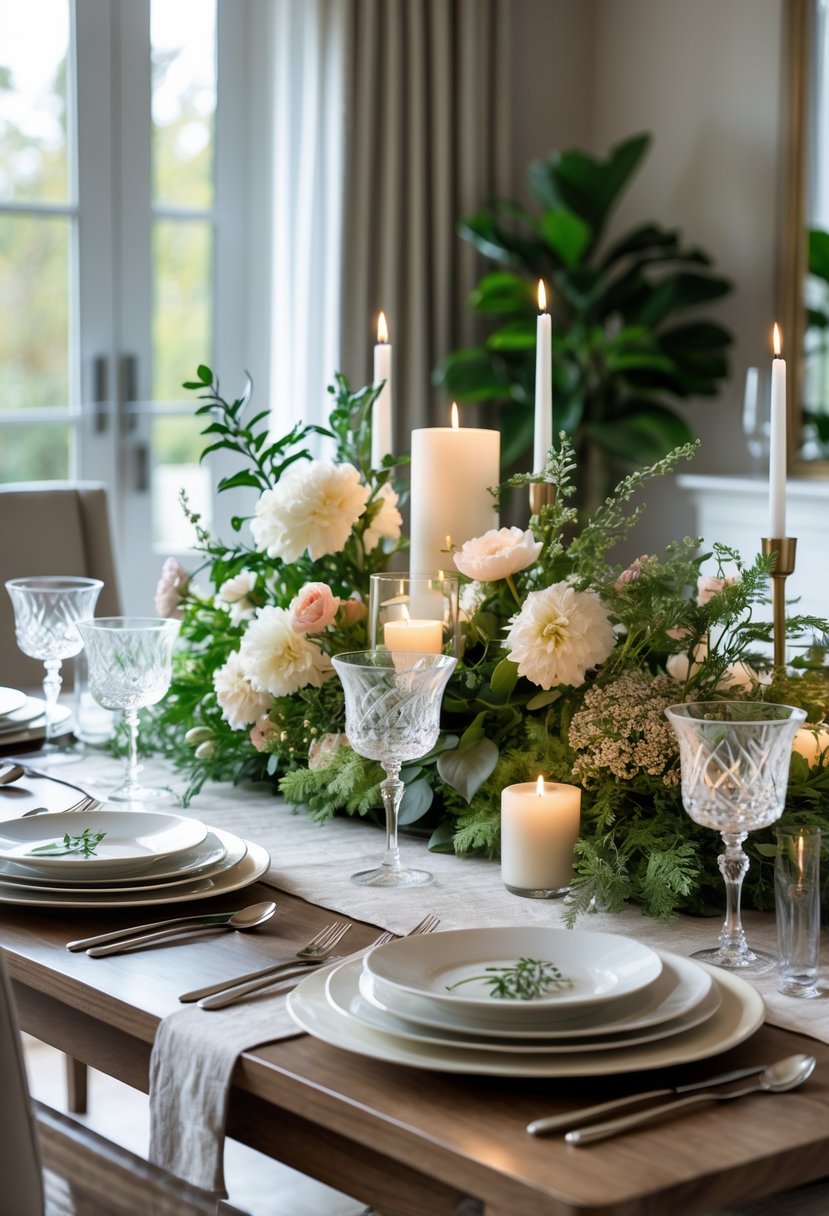Dining Room Table Centerpiece Ideas to Elevate Your Dining Experience
A dining room table centerpiece can change the look and feel of a space. It adds style and personality while making the area feel more inviting. Many people use centerpieces to create a focal point or to bring life to their dining rooms.

The best dining room table centerpieces are simple, adaptable, and reflect the homeowner’s taste. They can fit different styles and occasions without being difficult to create or maintain. This makes them a valuable part of home decoration.
1) Fresh flower arrangements in seasonal blooms

Fresh flower arrangements add natural beauty to a dining room table. Using seasonal blooms helps keep the centerpiece fresh and affordable.
Choosing flowers that match the season also brings a sense of harmony to the space. It offers color and a light fragrance that enhances the dining experience.
2) Cluster of pillar candles on a decorative tray

A cluster of pillar candles in different heights creates a simple and stylish centerpiece. Placing them on a decorative tray keeps the arrangement tidy and easy to move.
This setup works well with neutral or matching colors to blend with the room’s decor. It adds warmth without being overwhelming.
3) Rustic wooden bowl filled with assorted fruits

A rustic wooden bowl offers a simple and natural look for a dining table. Filling it with assorted fruits like apples, oranges, and pears adds color and freshness.
This idea creates a warm and inviting atmosphere without needing extra decorations. It also encourages healthy snacking for those at the table.
4) Minimalist glass vase with eucalyptus branches

A clear glass vase with eucalyptus branches creates a simple, fresh centerpiece. The transparent vase highlights the green leaves without distraction.
Using Silver Dollar eucalyptus adds fullness with its round leaves. This look suits modern and clean dining spaces well. It brings natural beauty with little effort.
5) Succulent planter centerpiece for a modern touch

A succulent planter adds a clean and simple look to the dining table. Its natural textures and shapes bring life without overwhelming the space.
Using a mix of succulents in a low container keeps the view open. This style fits well with modern and minimalist decor, adding subtle color and interest.
6) Vintage-inspired ceramic pitcher with wildflowers

A vintage ceramic pitcher filled with wildflowers adds a simple, rustic charm to the dining table. It works well with different styles and seasons.
The soft colors and natural textures of wildflowers make the centerpiece feel warm and inviting. This look fits both casual and formal settings.
7) Geometric terrarium with air plants

Geometric terrariums create a clean, modern look for a dining room table. They often use glass shapes like pyramids or cubes to hold air plants.
These terrariums are easy to customize with small stones, moss, or sand. They bring a simple but stylish touch without taking much space.
8) Stacked antique books topped with a small sculpture

Stacking antique books creates a simple and classic centerpiece for the dining room table. The worn covers add texture and vintage charm to the space.
A small sculpture placed on top completes the look. It adds height and an artistic touch without taking up too much room.
This arrangement works well in both casual and formal settings. It brings character and a subtle focal point to the table.
9) Woven basket centerpiece with dried pampas grass

A woven basket filled with dried pampas grass brings a natural, rustic look to the dining table. The soft, feathery texture of pampas grass pairs well with the rough weave of the basket.
This combination adds warmth and a casual yet stylish feel. It works well with neutral tableware for a simple, cozy setting.
10) Mix of scented candles and greenery garland

A mix of scented candles and greenery garland creates an inviting table centerpiece. The greenery adds fresh, natural texture while the candles provide warm light and a pleasant aroma.
They can be arranged simply by laying a garland down the center of the table and placing candles at intervals. This setup suits both casual and formal dining settings.
Principles of Effective Table Centerpiece Design

A well-designed centerpiece works with the size of the table, the colors of the room, and the purpose it serves. It should feel in balance with its surroundings, add to the room’s look, and sometimes offer practical use.
Balancing Scale and Proportion
The size of the centerpiece must fit the table. A large table can handle a taller or wider arrangement. For smaller tables, a low and compact centerpiece is better to avoid crowding.
If the centerpiece is too tall, it can block views and make conversation difficult. It should not extend beyond the table’s edges. Aim for a centerpiece height between 12 and 18 inches for most tables.
Proportion also matters in the choice of objects. Mixing very large with very small pieces can feel off. Try grouping similar-sized items or using a main piece with smaller accents.
Choosing Colors That Complement Your Dining Space
Colors in the centerpiece should match or softly contrast the room’s palette. Using colors from the walls, furniture, or floor creates harmony.
For example, neutral room tones pair well with natural greens, whites, or soft pastels. Bright or bold colors work if the room is mostly plain and needs a splash of energy.
Seasonal colors also help. Warm oranges, reds, and yellows suit autumn, while cool blues and whites fit winter. Avoid clashing colors to keep the space calm and inviting.
Incorporating Functional and Decorative Elements
A centerpiece can be both pretty and practical. Candles add warmth and light but should be unscented for dining. Bowls can hold fruit or nuts, offering decoration and snacks.
Fresh flowers bring life but need water and care. Decorative branches or dried arrangements last longer and need no upkeep.
Mixing functional and decorative items lets a centerpiece stay useful between meals while looking attractive. Functional pieces should not crowd eating space or make the table feel cluttered.
How to Style Centerpieces Throughout the Year

Changing a centerpiece throughout the year keeps the dining table fresh and fitting for each season or event. This involves choosing elements that match the time of year and shifting designs to suit different occasions. Practical tips help make these style changes simple and striking.
Seasonal Transitions and Rotations
Centerpieces can reflect the changing seasons by swapping out key elements. In spring and summer, fresh flowers like tulips or daisies add bright, natural color. For fall, items like pumpkins, pinecones, and warm-colored leaves create a cozy feel. Winter often calls for evergreens, candles, or poinsettias to bring a festive touch.
Using a versatile vessel, such as a wooden bowl or ceramic pot, can make it easy to change the centerpiece’s contents. Seasonal fruit, like apples or citrus, is a simple addition that works year-round with only slight adjustments. Rotating the display every few months helps maintain visual interest without excessive effort.
Adapting Centerpieces for Special Occasions
Special occasions require centerpieces that highlight the event without overpowering the table. For dinners or holidays, adding candles or themed decorations like small ornaments or ribbons can elevate the look. Keeping the base simple allows for easy additions tailored to the celebration.
Size matters too. Smaller, compact centerpieces work well for everyday dining, while larger and more elaborate designs suit dinner parties or holiday meals. Coordinating colors with the event’s theme creates a cohesive atmosphere. Simple changes, like adding fresh flowers or swapping candle holders, can make the centerpiece suitable for different celebrations throughout the year.
